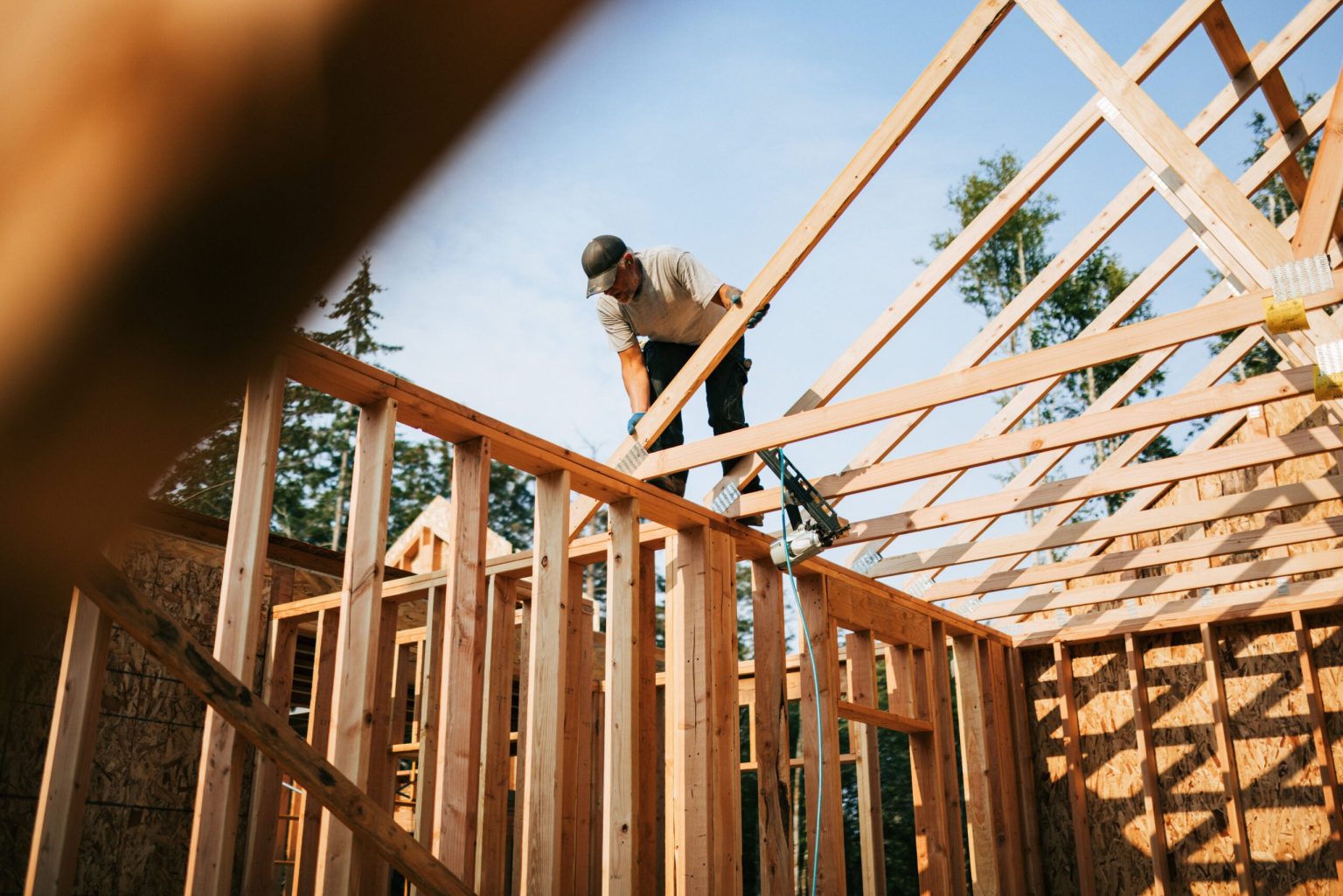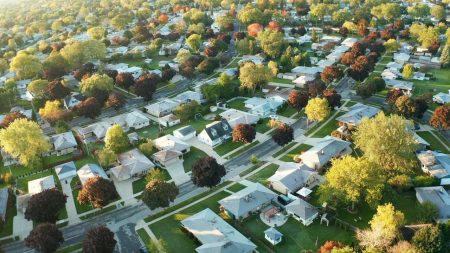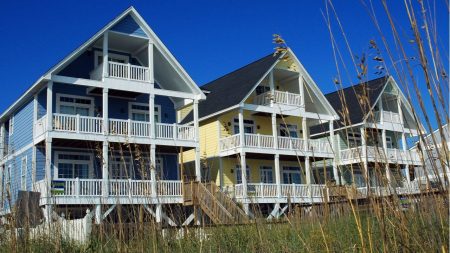Key takeaways
- An increase in prices for construction materials will raise the replacement cost of insured homes
- Tariffs will add an estimated nearly $11,000 to the cost of building a home
- Most imports of construction materials in the U.S. come from China, Mexico and Canada, the nations that currently have some of the highest tariffs
Increasing costs for construction, appliances and other household items stemming from new tariffs on imported goods threaten to raise home insurance premiums by making it more expensive for insurance companies to replace homes and their contents.
In early April, President Donald Trump imposed a universal tariff of 10 percent on most nations, with higher tariffs he announced earlier on “pause” for 90 days. There are steeper levies in place for the U.S.’ top three trading partners, the source of most of the nation’s imported construction material: China, Canada and Mexico.
In addition, there’s a 25 percent tariff on steel and aluminum worldwide that could add to the cost of home construction. For example, most HVAC ductwork for homes is made from galvanized steel or aluminum.
Economists and policymakers, including Federal Reserve Chair Jerome Powell, say they expect the new import levies will lead to higher inflation as the U.S. importers who pay the tariffs pass on the cost. Tariffs likely will add nearly $11,000 to the cost of building a home, according to the National Association of Home Builders.
“When insurance companies are on the hook for higher replacement costs, that means insurance premiums go higher,” says Chris Low, chief economist of FHN Financial in New York.
Tariffs could reheat inflation
It’s a repeat of the dynamics seen after the pandemic when disruptions to supply chains sparked price increases that led to a four-decade high in inflation in mid-2022 before it fell to a four-year low last month. That pre-tariff inflation report showed annualized price gains at 2.4 percent, near the 2 percent target set by the Fed.
We already saw premiums jump after the pandemic, when a shortage of building materials caused prices to rise. One of the impacts was a substantial increase in insurance premiums. We’re likely to see the same dynamic again.
— Chris Low, chief economist, FHN Financial
Tariffs increase the cost of imported construction materials, and they also boost the costs for insurers replacing items inside a home. For example, China accounts for nearly half of U.S. imports of home appliances and about a third of furniture imports, according to the National Retail Federation. Mexico is the source of $500 million worth of imported gas ranges annually, according to NAHB.
Tariffs aren’t the only factor causing home insurance premiums to rise, Low says. An increase in natural disasters, such as the wildfires in Los Angeles earlier this year, is also putting upward pressure on rates. The inflation resulting from tariffs will add to that, he says.
Tariffs raise construction costs
About 27 percent of imports for U.S. residential construction come from China, 11 percent come from Mexico, and 8 percent come from Canada, according to an analysis of 2023 import data by NAHB.
While the Trump administration reduced tariffs to 10 percent for most countries, after initially setting them much higher, there were exceptions.
China saw its tariff rate hiked to 145 percent — though Trump now says he expects that will drop “substantially” — and tariffs for Canada and Mexico are at 25 percent, with exceptions for some products.
Tariffs don’t just increase prices for imported goods. They also increase prices for domestically made items that rely on tariffed metals and other materials, according to a Bank of America report in March.
Masco, the parent company of Delta Faucet Co., told customers it plans to raise prices for plumbing supplies by 7 percent to 9 percent due to tariffs, the report said. Shaw Industries, which makes flooring products, already hiked prices by about 7 percent on some items, it said.
“Rapid-fire changes in tariffs threaten to drive prices higher for many essential construction goods,” says Ken Simonson, chief economist of the Associated General Contractors of America. “Contractors’ inboxes are bulging with ‘Dear Valued Customer’ letters announcing further increases for many products.”
Builders grapple with price changes
Carl Harris, who constructs homes in the towns surrounding Wichita, Kansas, says he has received several emails from suppliers announcing price hikes in recent weeks. He is also hearing from subcontractors, such as plumbers, that they can’t guarantee their price estimates for longer than 30 days, rather than the six months they used to give homebuilders, Harris says.
“We’re getting warnings from our supply houses and our specialty trade partners” about price increases caused by the new tariffs, says Harris.
Harris says the uncertainty about pricing is causing him to shift away from custom building projects, in which a customer hires him to build a home at a pre-determined price, in favor of doing more “spec” building, meaning building a new home and then setting the price later.
“I won’t know the price of a house until I finish that house,” he says. “A build is going to take me seven to eight months. We don’t just stack up all the products on the job site and pay for them up front, so there’s a risk of cost escalation.”
When will tariffs boost insurance premiums?
Rising replacement costs stemming from tariffs won’t immediately impact premiums, Low says. That’s because companies first wait to see the impact of economic changes and then they need to get rate hikes approved by state regulators, he says. Typically, the lag is about a year, says Low.
And, since most people have annual policies, consumers won’t see a change in premiums until those policies renew, Low says.
“It takes a while before premiums react,” says Low.
According to average rate data from Quadrant Information Services, the average cost of home insurance for a policy with $300K in dwelling coverage has increased 7.1 percent since June 2022 — from $2,116 to $2,267 in April.
The economic impacts of tariffs
Tariffs raise revenue for the federal government. According to an estimate from the Congressional Budget Office, a 10 percent across-the-board tariff coupled with an additional 50 percent tariff on goods from China would raise $2.9 trillion for federal coffers over the next 10 years.
The import duties also could also reduce consumer spending and slow the U.S. economy. The odds of the U.S. economy entering a recession within the next year have risen to 36 percent, up from 26 percent at the end of 2024, according to Bankrate’s latest Economic Indicator Poll.
“Currently, the biggest risk to financial markets and economic activity stems from the decline in consumer and corporate sentiment and loss of confidence in the economy,” says Selma Hepp, chief economist at Cotality.
An increase in prices for everyday items like groceries will stretch the budgets of American families and make it tougher for homeowners to pay higher insurance premiums, says Thomas Nitzsche, a financial educator with Money Management International.
If people haven’t cut back on their spending and started adding to their savings, now is the time to do it, he says.
“You want to do whatever you can do to reduce financial stress,” says Nitzsche. “It might mean some changes in daily life — eating out less, not going on big vacations, putting off some purchases — but the average family can negotiate changes like that.”
The U.S. economy shrank 0.3 percent in the first quarter, a government report said this week. Economists typically define a recession as two consecutive quarters of economic contraction.
This month, J.P. Morgan raised its outlook for a recession within the next year to 60 percent, up from 40 percent, because of the new tariffs.
Even with the pause on the higher tariffs, “what remains is still enough to push the U.S. and China — and thus likely the global economy — into a recession this year,” Bruce Kasman, chief global economist of J.P. Morgan, said in a report.
Read the full article here









